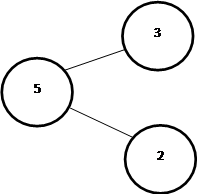Final lesson - Breaking down numbers
into smaller form
Math
problems! It is better to term them
“math magic” or “math tricks.” Breaking down numbers into small, easily
understood steps will transform those “problems” into fun solutions. Using
objects, looking for patterns, acting out problems, making charts and
visualizing are just a few of the many keys.
-
Use “real world examples.” Sometimes math seems too obscure when it’s only an equation. Math becomes fun your students see how math applies to the real world. The key is to change how math is viewed. Think, explore and experience!
- Look for patterns. Train your eye to look for repetition. There are some great books, such as “The Grapes of Math” by Greg Tang, that teaches this concept. Children learn how to add by seeing numbers in sets, and creatively solve problems with patterns and symmetries.
- Make charts. It’s so much easier to discuss the percentage of a sales increase by looking at a bar chart than at numbers on a page. You can measure everyone in your family and make a bar chart of the heights. Calculate the “average” height.
- Find some magic. Discover fun “math tricks”. For example:
 |
| breaking down numbers into smaller form |
300 ÷ 3 = 100
/ 30 ÷ 3 = 10 / 24 ÷ 3 = 8
- Draw a picture to help you understand the problem in a new way. Word problems are best when a child can visualize what is happening.
- Visualize.
Visualize all the steps involved in solving a problem and try to find the
answer. Take math “tricks” to the next step and do “mental math.” It’s
simpler and more fun than you thought possible.
- Use
objects.
Lay out candy, buttons, beans, blocks, paperclips or pennies to see the
parts of a problem. Dividing a pie can be educational—and delicious!
- Learn
to take “one step at a time.” Break down equations into easy-to-do
parts. After all, one runs (and wins!) a marathon one step at a time. A
long math equation doesn’t need to be solved in one large leap.
How do we introduce this concept to preschoolers? We could start with smaller numbers. However, it is important that they have developed a sense of ‘ten’ and ‘place value’. Here are some tips to develop this skill in young children.
Number
Sense Series: A Sense of 'ten' and Place Value
Once a basic number sense has developed for numbers up
to ten, a strong 'sense of ten' needs to be developed as a foundation for both
place value and mental calculations. (This is not to say that young children do
not have an awareness of much larger numbers. Indeed, there is no reason why
children should not explore larger numbers while working in depth on
'tenness').
Ten-Frames
Ten-Frames are two-by-five rectangular frames
into which counters are placed to illustrate numbers less than or equal to ten,
and are therefore very useful devices for developing number sense within the
context of ten.
The use of ten-frames was developed by researchers
such as Van de Walle (1988) and Bobis (1988). Various arrangements of counters
on the ten frames can be used to prompt different mental images of numbers and
different mental strategies for manipulating these numbers, all in association
with the numbers' relationship to ten.
Plenty of activities with ten-frames will enable children to automatically think of numbers less than ten in terms of their relationship to ten, and to build a sound knowledge of the basic addition/subtraction facts for ten which are an integral part of mental calculation. For example, a six year old child, when shown the following ten-frame, immediately said, "There's eight because two are missing."
Plenty of activities with ten-frames will enable children to automatically think of numbers less than ten in terms of their relationship to ten, and to build a sound knowledge of the basic addition/subtraction facts for ten which are an integral part of mental calculation. For example, a six year old child, when shown the following ten-frame, immediately said, "There's eight because two are missing."
This child had a strong sense of ten and its subgroups and was assisted by the frame of reference provided by the ten-frame. Once this type of thinking is established, the ten-frame is no longer needed. Although dealing with whole numbers initially, the 'part-part-whole' thinking about numbers supports the understanding of fractions, in particular tenths.
Place Value
'Ten' is of course the building block of our Base 10
numeration system. Young children can usually 'read' two-digit numbers long
before they understand the effect the placement of each digit has on its
numerical value. For example, a 5 year-old might be able to correctly read 62
as sixty-two and 26 as twenty-six, and even know which number is larger,
without understanding why the numbers are of differing values.
Ten-frames can provide a first step into understanding two-digit numbers simply by the introduction of a second frame. Placing the second frame to the right of the first frame, and later introducing numeral cards, will further assist the development of place-value understanding.
Ten-frames can provide a first step into understanding two-digit numbers simply by the introduction of a second frame. Placing the second frame to the right of the first frame, and later introducing numeral cards, will further assist the development of place-value understanding.
I hope these tips were helpful.



















